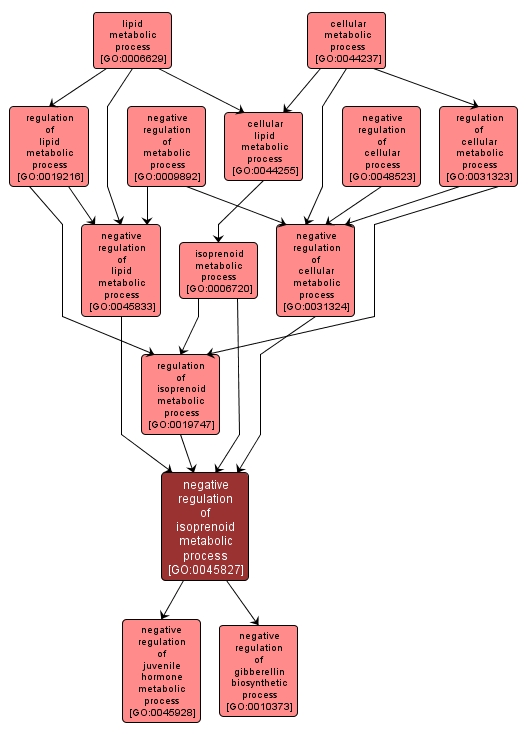GO TERM SUMMARY
|
| Name: |
negative regulation of isoprenoid metabolic process |
| Acc: |
GO:0045827 |
| Aspect: |
Biological Process |
| Desc: |
Any process that stops, prevents or reduces the frequency, rate or extent of the chemical reactions and pathways involving isoprenoid. |
Synonyms:
- downregulation of isoprenoid metabolic process
- inhibition of isoprenoid metabolic process
- down regulation of isoprenoid metabolic process
- negative regulation of isoprenoid metabolism
- down-regulation of isoprenoid metabolic process
|
|

|
INTERACTIVE GO GRAPH
|














